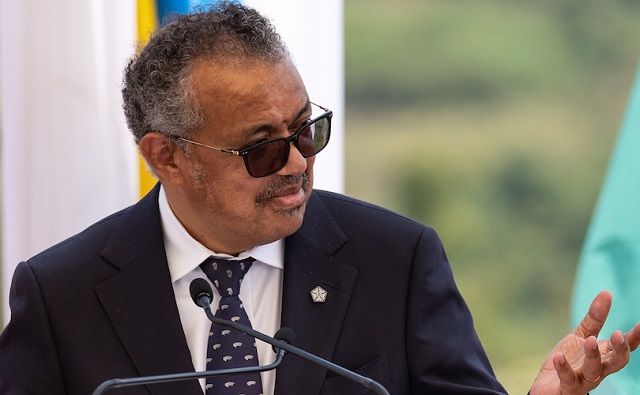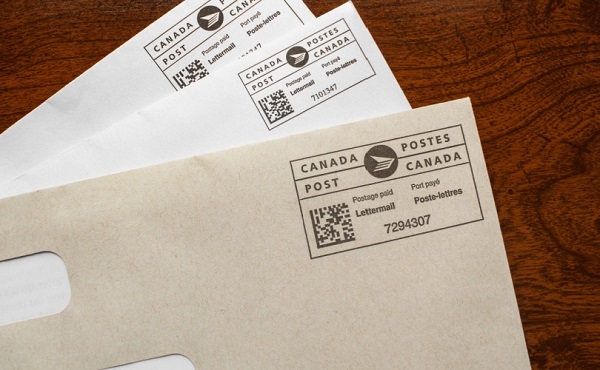Great Reset
WHO claims bird flu strain infected human for first time, has ‘potential for high public health impact’

Director-General of the World Health Organization, Dr Tedros Adhanom Ghebreyesus, speaks at a groundbreaking ceremony of BioNTech’s first mRNA vaccine manufacturing facility in Africa.
From LifeSiteNews
The WHO said a new strain of bird flu jumped to humans for the first time and killed a man in Mexico, but Mexican authorities say the man died due to long-term diseases, and experts like Dr. Peter McCullough are pointing to gain-of-function research.
The World Health Organization (WHO) said this week that a new strain of bird flu detected in humans for the first time has a “potential for high public health impact.”
According to officials, a 59-year-old man in Mexico with “multiple underlying conditions,” who died after battling a weeklong illness, tested positive for H5N2, a strain of bird flu that has never been seen in humans. That strain is not the same as the H5N1 bird flu that was recently reported in U.S. dairy farms.
READ: The US government’s ‘psychopathic’ record on bioweapons should give us pause about ‘bird flu’ claims
The man’s relatives said that he was bedridden for other reasons for three weeks before becoming infected, after which he suffered “fever, shortness of breath, diarrhea and nausea,” according to the Daily Mail.
While the WHO described the illness as a “confirmed fatal case of human infection with avian influenza A(H5N2) virus,” Mexico’s health ministry said the death was due to underlying conditions that led to septic shock, Reuters reported.
“The diseases were long-term and caused conditions that led to the failure of several organs,” the department said.
The WHO said it believes the virus poses a “low” risk to the general population, in part because in the past, “A(H5) viruses… have not acquired the ability to sustain transmission between humans.”
However, the global health body claimed that human infections with an influenza A virus or cases of human exposure to such a viral outbreak in animals make “necessary” “enhanced surveillance in potentially exposed human populations.”
READ: Rep. Chris Smith warns WHO pandemic treaty is the greatest threat to freedom in human history
The WHO also said that in cases of “confirmed or suspected human infection caused by a novel influenza A virus with pandemic potential,” including the bird flu, the case’s “history of exposure to animals and/or travel” should be logged, “along with contact tracing.”
It is unclear how the Mexican man would have contracted the bird flu, in part because he was reported to have had no connection to farms or poultry.
Dr. Peter McCullough, one of the most highly published cardiologists in history, has pointed to gain-of-function research as a likely explanation for a “jump” of bird flu from animals to humans, alluding to the fact that it has long historically only been detected in animals. He called for a shutdown of U.S. gain-of-function labs and warned that animal culling and bird flu vaccines would only create “more resistant strains.”
Gain-of-Function Bird Flu Proximal Origins of Current Strain from USDA Southeast Poultry Research Laboratory and Spreading in Migratory Wild Birds
Lycett et al have published that bird flu has probably been around for >100 years. Why is it suddenly a problem now? Evaluate the… https://t.co/IpmChzksbm pic.twitter.com/sz98U6vyd4
— Peter A. McCullough, MD, MPH® (@P_McCulloughMD) June 6, 2024
Already, over four million chickens in Iowa are on the chopping block because of reported detection of bird flu among their flock, and it was recently announced that the U.S. government is close to an “agreement to fund a late-stage trial of Moderna’s mRNA bird flu vaccine.”
READ: Yes, COVID came from a lab. When will the mainstream media quit gaslighting us?
Dr. Joseph Mercola pointed out in 2022 that Bill Gates and Dr. Anthony Fauci have spent years funding research to “develop a bird flu pathogen capable of infecting humans,” as Alexis Baden-Mayer showed in an article published last year. Some of this gain-of-function research has taken place in U.S. Department of Defense-funded biolabs in Ukraine.
Mercola noted that Christian Westbrook (the “Ice Age Farmer”) detailed in one video Gates’ funding of Dr. Yoshihiro Kawaoka in Wisconsin to identify mutations in various bird flu strains that could have pandemic potential. Fauci has also funded Kawaoka’s work since 1990.
“In one experiment, Kawaoka mixed bird flu virus with the Spanish flu virus, resulting in a highly lethal respiratory virus with human transmission capability. Kawaoka has also played around with mixtures of H5N1 and the 2009 H1N1 (swine flu) virus, creating an airborne hybrid capable of completely evading the human immune system, effectively rendering humans defenseless against it,” explained Dr. Mercola.
READ: Doctor warns WHO pandemic treaty includes ‘gain of function’ data sharing
Remarkably, the scientist Dr. Michael Gregor, a vegan who once once testified on behalf of Oprah Winfrey in her “meat defamation” trial, has repeatedly claimed that chicken farms will trigger an apocalyptic virus that will threaten half of humankind. In 2006, he published a book called Bird Flu: A Virus of Our Own Hatching, in which he says that “leading public health authorities now predict as inevitable a pandemic of influenza, triggered by bird flu and expected to lead to millions of deaths around the globe.”
Accordingly, Westbrook “suspects a weaponized bird flu may be released to usher in The Great Reset and Fourth Industrial Revolution, which include the elimination of traditional farming and meat consumption in favor of patented, lab-created ‘foods,’” Dr. Mercola noted. In Westbrook’s words, this would be a “a controlled demolition of the protein supply.”
Censorship Industrial Complex
Alberta senator wants to revive lapsed Trudeau internet censorship bill

From LifeSiteNews
Senator Kristopher Wells and other senators are ‘interested’ in reviving the controversial Online Harms Act legislation that was abandoned after the election call.
A recent Trudeau-appointed Canadian senator said that he and other “interested senators” want the current Liberal government of Prime Minister Mark Carney to revive a controversial Trudeau-era internet censorship bill that lapsed.
Kristopher Wells, appointed by former Prime Minister Justin Trudeau last year as a senator from Alberta, made the comments about reviving an internet censorship bill recently in the Senate.
“In the last Parliament, the government proposed important changes to the Criminal Code of Canada designed to strengthen penalties for hate crime offences,” he said of Bill C-63 that lapsed earlier this year after the federal election was called.
Bill C-63, or the Online Harms Act, was put forth under the guise of protecting children from exploitation online.
While protecting children is indeed a duty of the state, the bill included several measures that targeted vaguely defined “hate speech” infractions involving race, gender, and religion, among other categories. The proposal was thus blasted by many legal experts.
The Online Harms Act would have in essence censored legal internet content that the government thought “likely to foment detestation or vilification of an individual or group.” It would be up to the Canadian Human Rights Commission to investigate complaints.
Wells said that “Bill C-63 did not come to a vote in the other place and in the dying days of the last Parliament the government signaled it would be prioritizing other aspects of the bill.”
“I believe Canada must get tougher on hate and send a clear and unequivocal message that hate and extremism will never be tolerated in this country no matter who it targets,” he said.
Carney, as reported by LifeSiteNews, vowed to continue in Trudeau’s footsteps, promising even more legislation to crack down on lawful internet content.
Before the April 28 election call, the Liberals were pushing Bill C-63.
Wells asked if the current Carney government remains “committed to tabling legislation that will amend the Criminal Code as proposed in the previous Bill C-63 and will it commit to working with interested senators and community stakeholders to make the changes needed to ensure this important legislation is passed?”
Seasoned Senator Marc Gold replied that he is not in “a position to speculate” on whether a new bill would be brought forward.
Before Bill C-63, a similar law, Bill C-36, lapsed in 2021 due to that year’s general election.
As noted by LifeSiteNews, Wells has in the past advocated for closing Christian schools that refuse to violate their religious principles by accepting so-called Gay-Straight Alliance Clubs and spearheaded so-called “conversion therapy bans.”
Other internet censorship bills that have become law have yet to be fully implemented.
Last month, LifeSiteNews reported that former Minister of Environment Steven Guilbeault, known for his radical climate views, will be the person in charge of implementing Bill C-11, a controversial bill passed in 2023 that aims to censor legal internet content in Canada.
Censorship Industrial Complex
Conservatives slam Liberal bill to allow police to search through Canadians’ mail

From LifeSiteNews
Conservatives are warning that the Liberals’ new border bill will allow police to search Canadians’ mail.
During a June 5 debate in the House of Commons, Conservative Member of Parliament (MP) Frank Caputo voiced concerns over Bill C-2, the Strong Borders Act, which will permit police and government officials to open and examine Canadians’ mail.
“This is something I know I am going to get mail about,” Caputo said. “We are now talking about language in the Charter, what is referred to as an expectation of privacy.”
Bill C-2, introduced by the Liberals under Prime Minister Mark Carney, is framed as legislation to combat drugs making their way across the border. However, many have pointed out that it severely infringes on Canadians’ Charter rights.
The Liberals have failed to address this concern in their 130-page legislation, leading Conservatives to demand accountability.
“If they can put out a 130-page bill, certainly they can put out a four or five-page Charter statement,” he said. “Certainly, somebody in the government asked if it was Charter compliant — but they won’t say.”
Under Bill C-2, Canada would amend the Canada Post Corporation Act to “remove barriers that prevent police from searching mail, where authorized to do so in accordance with an Act of Parliament, to carry out a criminal investigation.”
It also seeks to “expand Canada Post inspection authority to open mail.”
As LifeSiteNews previously reported, legal organizations have warned that the legislation could lead to a cashless economy as it would ban cash payments over $10,000.
“Part 11 amends the Proceeds of Crime (Money Laundering) and Terrorist Financing Act to prohibit certain entities from accepting cash deposits from third parties and certain persons or entities from accepting cash payments, donations or deposits of $10,000 or more,” the legislation proposes.
In a June 4 X post, the Justice Centre for Constitutional Freedoms (JCCF) warned that “If Bill C-2 passes, it will become a Criminal Code offence for businesses, professionals, and charities to accept cash donations, deposits, or payments of $10,000 or more. Even if the $10,000 payment or donation is broken down into several smaller cash transactions, it will still be a crime for a business or charity to receive it.”
The JCCF pointed out that while cash payments of $10,000 are not common for Canadians, the government can easily reduce “the legal amount to $5,000, then $1,000, then $100, and eventually nothing.”
“Restricting the use of cash is a dangerous step towards tyranny and totalitarianism,” the organization warned. “Cash gives citizens privacy, autonomy, and freedom from surveillance by government and by banks, credit card companies, and other corporations.”
Similarly, Carney’s move to restrict Canadians is hardly surprising considering his close ties to the World Economic Forum and push for digital currency.
In a 2021 article, the National Post noted that “since the advent of the COVID pandemic, Carney has been front and centre in the promotion of a political agenda known as the ‘Great Reset,’ or the ‘Green New Deal,’ or ‘Building Back Better.’
“Carney’s Brave New World will be one of severely constrained choice, less flying, less meat, more inconvenience and more poverty,” the outlet continued.
In light of Carney’s new leadership over Canadians, many are sounding alarm over his distinctly anti-freedom ideas.
Carney, who as reported by LifeSiteNews, has admitted he is an “elitist” and a “globalist.” Just recently, he criticized U.S. President Donald Trump for targeting woke ideology and has vowed to promote “inclusiveness” in Canada.
Carney also said that he is willing to use all government powers, including “emergency powers,” to enforce his energy plan.
-

 Crime2 days ago
Crime2 days agoHow Chinese State-Linked Networks Replaced the Medellín Model with Global Logistics and Political Protection
-

 Addictions2 days ago
Addictions2 days agoNew RCMP program steering opioid addicted towards treatment and recovery
-

 Aristotle Foundation2 days ago
Aristotle Foundation2 days agoWe need an immigration policy that will serve all Canadians
-

 Business2 days ago
Business2 days agoNatural gas pipeline ownership spreads across 36 First Nations in B.C.
-

 Courageous Discourse2 days ago
Courageous Discourse2 days agoHealthcare Blockbuster – RFK Jr removes all 17 members of CDC Vaccine Advisory Panel!
-

 Business20 hours ago
Business20 hours agoEU investigates major pornographic site over failure to protect children
-

 Health1 day ago
Health1 day agoRFK Jr. purges CDC vaccine panel, citing decades of ‘skewed science’
-

 Censorship Industrial Complex2 days ago
Censorship Industrial Complex2 days agoConservatives slam Liberal bill to allow police to search through Canadians’ mail

